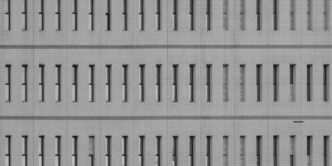A groundbreaking new method promises to reshape the way we manufacture nanoscale electronic components. Developed by a team at North Carolina State University, this innovative approach uses liquid metal that can self-assemble into precise, functional structures, offering a faster, cheaper, and more reliable alternative to traditional chip-making techniques.
Key Takeaways
- Self-Assembly Technology: Utilizes liquid metal to create nanoscale electronic components.
- Cost-Effective: Significantly reduces manufacturing costs compared to traditional methods.
- High Yield: Produces fewer defects, leading to more usable chips.
- Scalability: The process can be adapted for large-scale production.
The Self-Assembling Process
The new manufacturing technique employs an alloy known as Field’s metal, composed of indium, bismuth, and tin. The process begins when this liquid metal is placed next to a mold and exposed to oxygen, forming a thin oxide layer on its surface. A ligand solution is then introduced, which pulls metal ions from this layer, allowing them to flow through channels in the mold.
This flow is driven by capillary action, enabling the metal ions to act like tiny magnetic building blocks that assemble into orderly structures, resembling wires. The simplicity and efficiency of this method stand in stark contrast to traditional chip manufacturing, which often involves numerous intricate steps.
Heating and Finalization
Once the structures are formed, they undergo a heating process at approximately 600 degrees Celsius. This step is crucial as it fuses the material into robust semiconductor wires. During this process, a graphene coating naturally forms around the wires, enhancing their electrical conductivity and protecting them from degradation.
Achievements and Future Prospects
The researchers have successfully created functional diodes and transistors with wire diameters as small as 44 nanometers, a scale suitable for advanced electronics. The graphene coating not only improves conductivity but also allows for fine-tuning of the electrical properties of the components, making them versatile for various applications, including optoelectronics.
Advantages Over Traditional Methods
- Fewer Steps: Traditional chip manufacturing can involve dozens of complex steps, while this method simplifies the process.
- Cost Efficiency: The self-assembling approach significantly reduces production costs.
- High Yield: The technique boasts a high yield, meaning fewer defective chips and less waste.
- Scalability: By adjusting the mold size, manufacturers can produce vast arrays of nanoscale devices at a fraction of the current cost.
Conclusion
As the electronics industry continues to demand faster, smaller, and more efficient components, this innovative self-assembling manufacturing process could be the key to meeting those challenges. While it may not yet compete with atomic-scale resolutions achieved by industry giants, its potential for mass production and high yield positions it as a promising alternative in the future of electronics manufacturing.













